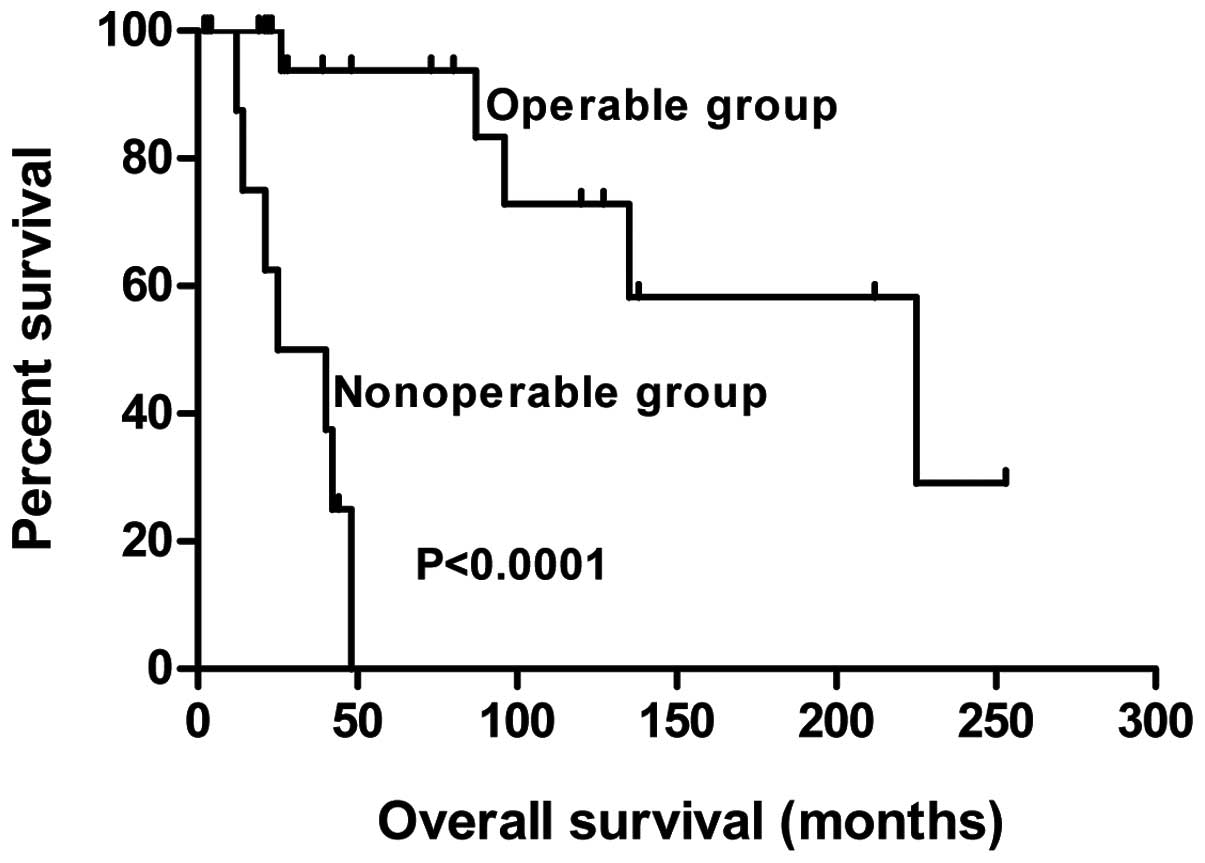Primary adenoid cystic carcinoma of the lung: Clinicopathological features, treatment and results
- Authors:
- Published online on: January 8, 2015 https://doi.org/10.3892/ol.2015.2859
- Pages: 1475-1481
Metrics:
Total
Views: 0 (Spandidos Publications: | PMC Statistics:
)
Total PDF Downloads: 0 (Spandidos Publications: | PMC Statistics:
)
Abstract
Adenoid cystic carcinoma of the lung (ACCL) is a rare salivary gland‑type malignant neoplasm that occurs infrequently as a primary tumor of the airway. Owing to its low incidence, the clinicopathological features, immunohistochemical expression spectrum, treatment and long‑term survival have not been fully elucidated. The present study retrospectively assessed the clinical features, immunohistochemical characters, treatment strategy and long‑term survival of 34 patients diagnosed with ACCL at the Beijing Chest Hospital, Capital Medical University (Beijing, China) between January 1993 and June 2014. ACCL tended to occur in younger patients, with an approximate male/female ratio of 1:1. The majority of ACCL arose from the central airway. Positive immunochemical staining was found in wide‑spectrum keratin (n=17), cytokeratin (CK)7 (n=11), p63 (11/12), S‑100 (7/8), vimentin (10/12) and smooth muscle actin (6/9). No staining of thyroid transcription factor‑1 (0/14), synaptophysin (0/7), cluster of differentiation 56 (0/7), CK20 (0/4) or chromogranin A (0/4) was observed. In the operable group (n=26), the addition of adjuvant radiotherapy to a positive margin resection (R1 resection) obtained long‑term survival times equivalent to that found in patients with a negative margin resection (R0 resection). No significant survival benefit from post‑operative radiotherapy was observed in the R0 resection group. For advanced cases, palliative radiotherapy and chemotherapy did not work efficiently. In addition, epidermal growth factor receptor mutation was a rare event in the ACCL patients. The results indicated that surgical resection is the optimal management for ACCL whenever feasible. Adjuvant radiotherapy with R1 resection is able to obtain long‑term survival times comparable with those found using an R0 resection. The recommendation of post‑operative radiotherapy for all patients with ACCL undergoing resection appears controversial. Owing to a poor response to radiotherapy and chemotherapy, more focus should be placed on the study of advanced ACCL in order to improve overall survival.











